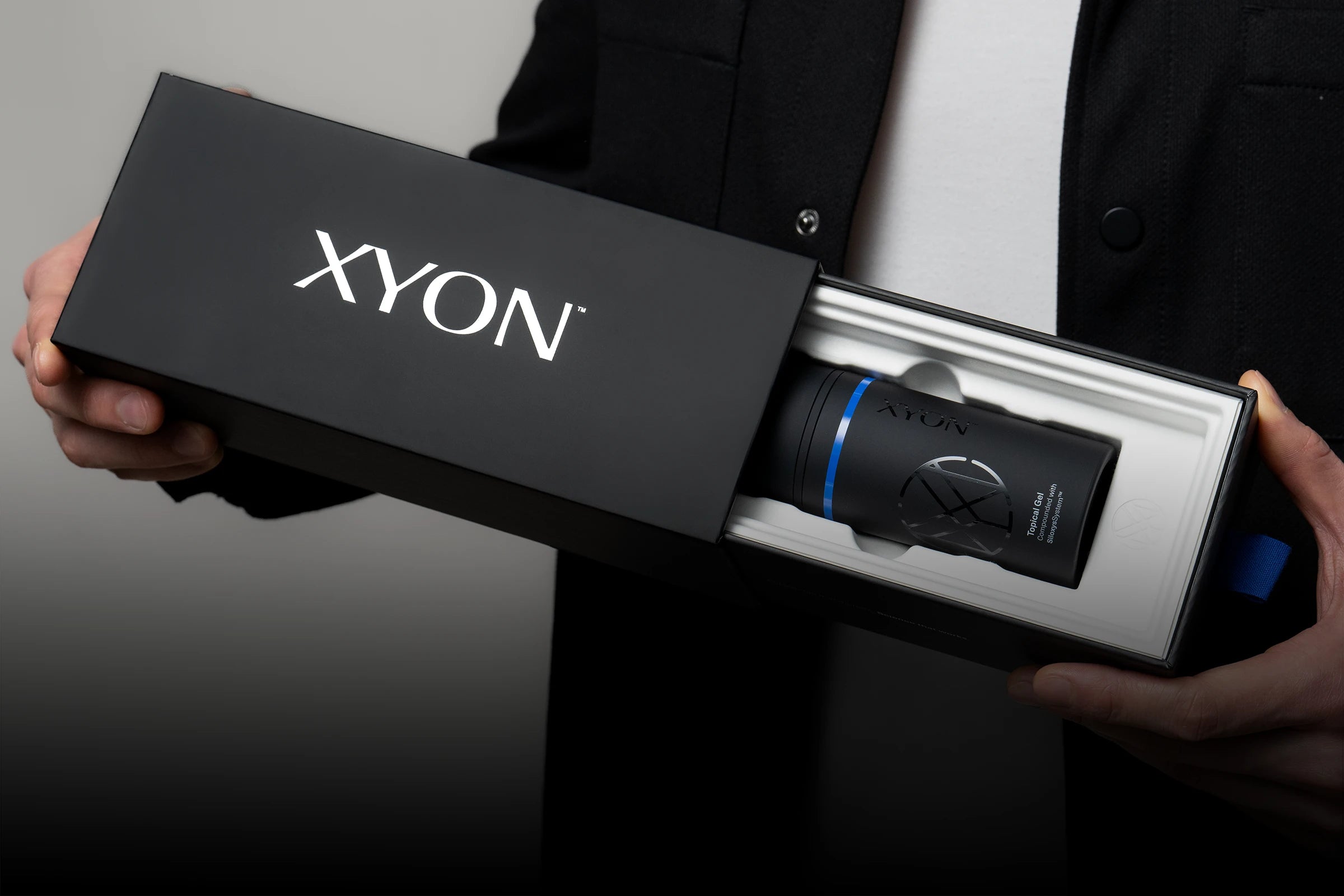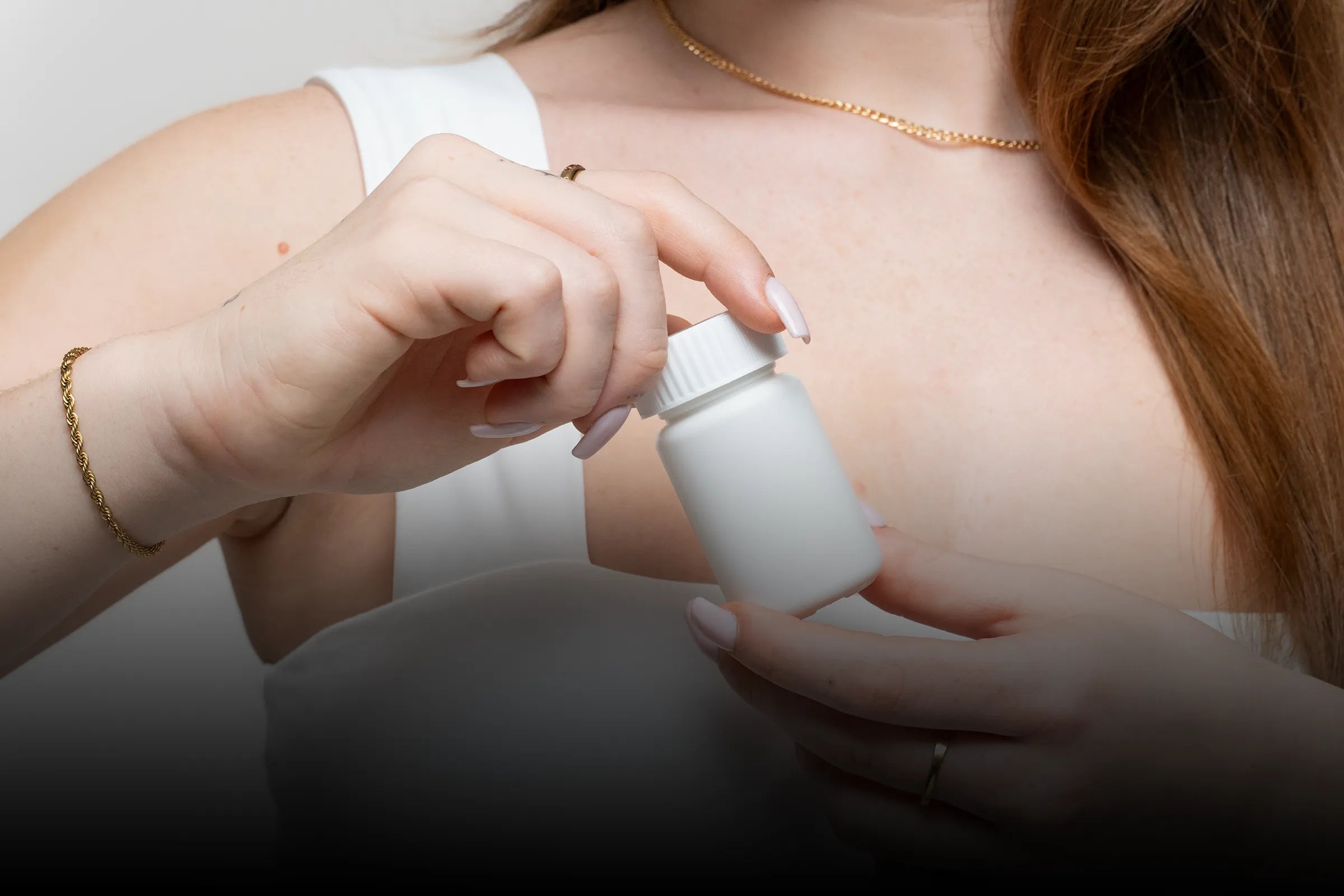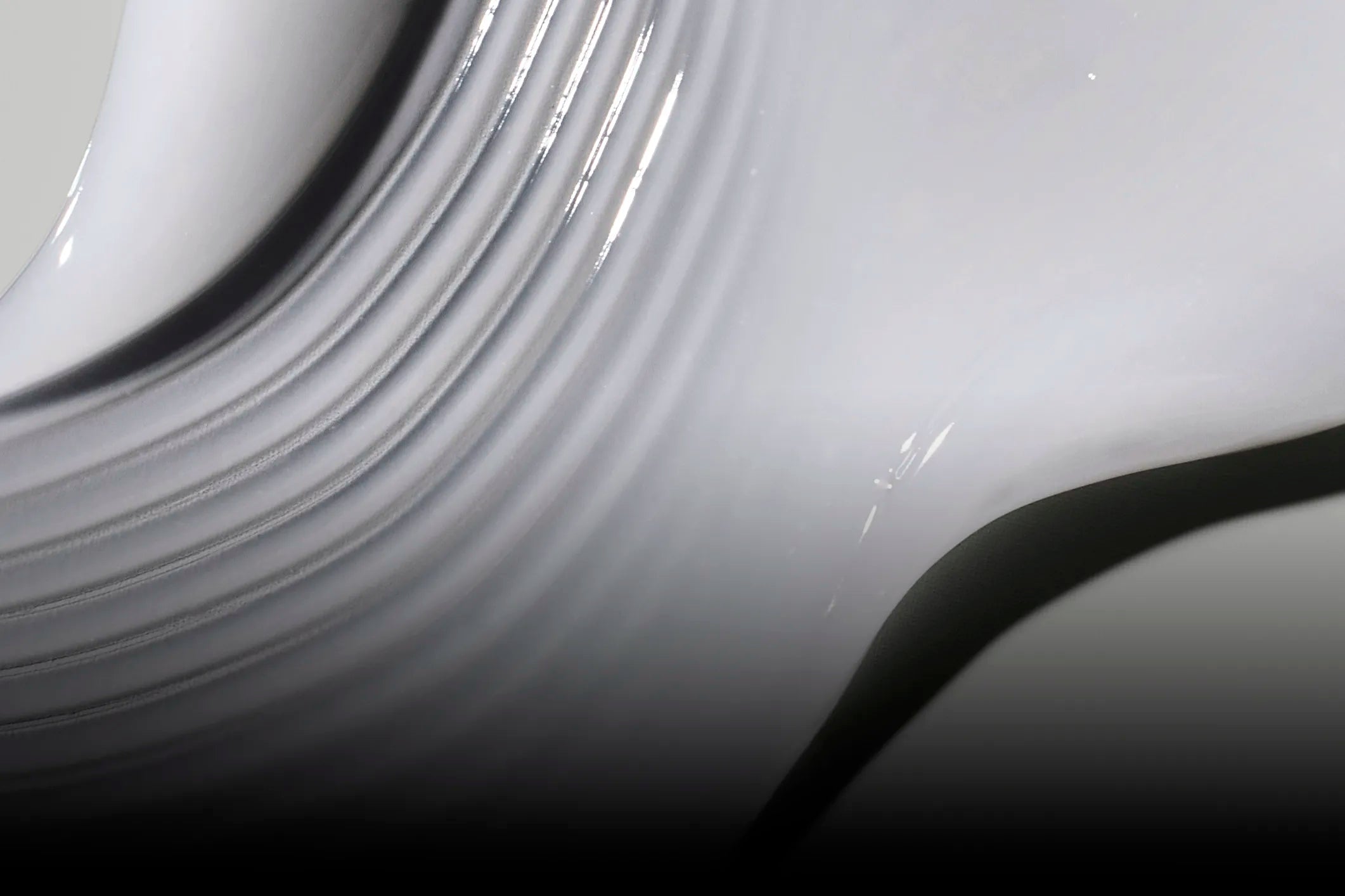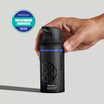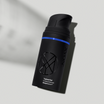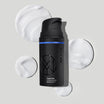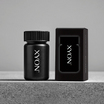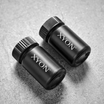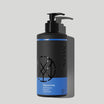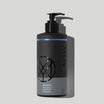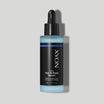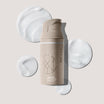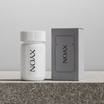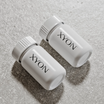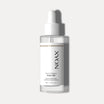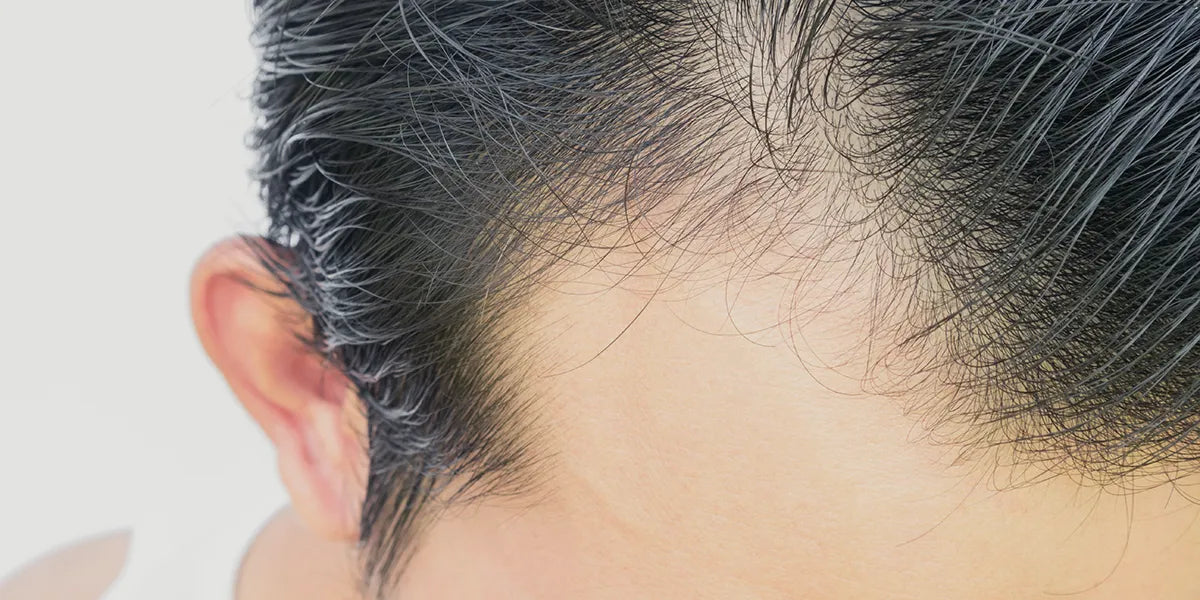Finasteride is the most clinically-effective, FDA-approved medication used to combat male pattern hair loss, or androgenetic alopecia (AGA).
Although it was introduced as an oral medication, compounded topical finasteride formulations have become increasingly popular over the past decade. These custom drug formulations are applied at the site of hair loss, delivering finasteride through the skin. They generally aim to reduce widespread systemic exposure to finasteride and lower the risk of sexual side effects.
Most topical formulations are compounded at 0.1% to 1% finasteride. XYON’s compounded Topical Finasteride, with SiloxysSystem™ Gel was designed to contain up to 2.5% finasteride, delivering more of the drug over a prolonged period of time.
How is XYON able to offer a compounded topical finasteride formulation that far exceeds the concentration of so many others? The short answer lies in our exclusive drug delivery system, SiloxysSystem™ Gel. A more detailed explanation can be found below.
Take the guesswork out of finding the right dosage. Our hair loss experts are here to help.
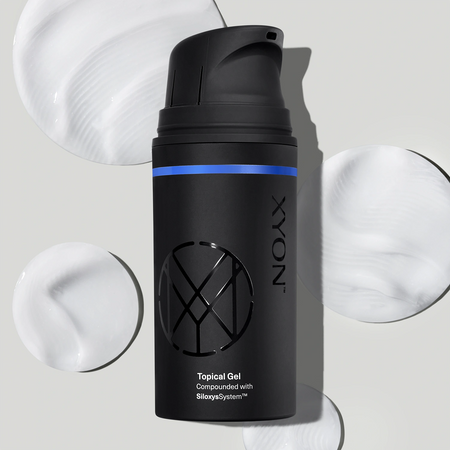

XYON's topical finasteride delivers the right amount of finasteride to maximize efficacy.
What finasteride dosage is approved by the FDA?
The FDA-approved dosage of finasteride for male pattern hair loss is 1 mg/day, taken by mouth.
Modified oral dosages and any topical formulations containing finasteride have not been individually approved by the FDA. These compounded medications must be prepared by a compounding pharmacy.
What is a compounded medicine?
Compounded drug formulations are tailored to meet the needs of individual patients. These customized medications contain FDA-approved pharmaceuticals in concentrations, mediums or combinations that have not been granted approval.
Compounded medications can only be obtained following an in-person medical assessment or virtual consultation with a physician. It’s the prescribing doctor’s responsibility to make sure that the recommended method of administration, medium and concentration are suitable given the active ingredient(s) being prescribed.
What concentration is best for topical finasteride?
The composition and concentration of finasteride in different topical formulations varies – they definitely aren’t one and the same. Most topical finasteride formulations contain a reduced concentration of the drug, typically between 0.1 to 1.0% finasteride. For context, 100 g of topical finasteride gel compounded at 1.0% finasteride would only contain 1.0 g of the active ingredient within the carrier.
With the right formulation, however, a much higher concentration of finasteride can be delivered via the skin, up to 2.5%. This works out to 2.5 g of finasteride in every 100 g of compounded topical medication.
What is Topical Finasteride, with SiloxysSystem™ Gel?
Topical Finasteride, with SiloxysSystem™ Gel is a prescription medication that can be compounded at up to 2.5% finasteride, using specialized SiloxysSystem™ Gel technology.
Available only at XYON, SiloxysSystem™ Gel is a precision topical carrier specifically designed to target finasteride to hair follicles within the scalp skin. Formulated and clinically tested by hair loss specialist Dr. Victor Hasson, MD, this novel drug delivery system aims to enhance the impact of finasteride at the scalp and minimize the risk of systemic absorption.
How does Topical Finasteride, with SiloxysSystem™ Gel work?
Once applied, SiloxysSystem™ Gel creates a mesh-like matrix across the scalp that holds the active ingredient on the surface of the skin. It slows the initial movement of finasteride into the outermost layer of skin, the epidermis, creating a reservoir of the active ingredient.
Within this external drug depot created by SiloxysSystem™ Gel, the concentration of finasteride is much higher than inside the body. The disparity between external and internal drug concentrations creates what’s called a concentration gradient.
Concentration gradients
A concentration gradient is established when the concentration of a given solute (in this case, finasteride) is higher on one side of a membrane than on the other. Over time, the solute moves from the area of higher concentration down the gradient, passing through the membrane by way of diffusion. The concentration on either side evens out gradually and at a sustained rate.
Once a concentration gradient has been established between the outside of the skin and the tissue beneath, finasteride moves into the body from the gel matrix over time. The concentration of finasteride on either side of the skin barrier is equalized gradually as the active ingredient is processed by the body.
Why is the concentration of finasteride in Topical Finasteride, with SiloxysSystem™ so high?
Topical Finasteride, with SiloxysSystem™ Gel is typically prescribed at 2.5% finasteride. This specific concentration of finasteride lends itself to the timed-release effect that can be achieved with SiloxysSystem™ Gel.
In controlled clinical trials using SiloxysSystem™ Gel with finasteride at 2.5%, this specific concentration generated hair regrowth with a reduced impact on circulating DHT levels, compared to other topical formulations. Given the data, 2.5% was established as the optimal concentration for Topical Finasteride, with SiloxysSystem™ Gel, striking a balance between safety and efficacy.
How can Topical Finasteride, with SiloxysSystem™ be safe?
Despite a comparatively high concentration of finasteride, XYON’s compounded Topical Finasteride, with SiloxysSystem™ Gel has shown to reduce the amount of finasteride in circulation by imparting a targeted and timed-release effect. A finasteride concentration of up to 2.5% is only possible thanks to the sustained-release effect that can be achieved with SiloxysSystem™ Gel technology.
A topical carrier’s composition determines how quickly the active ingredient will penetrate the skin and influences how much of the active ingredient will be absorbed into the bloodstream. SiloxysSystem™ Gel was specifically formulated to deliver more finasteride directly to the hair follicles over an extended period of time.
A clinical study on Topical Finasteride, with SiloxysSystem™ Gel showed that a concentration of 2.5% finasteride can visibly increase hair density with a reduced impact on serum DHT levels, indicating less systemic drug absorption.
In controlled lab studies, SiloxysSystem™ Gel demonstrated greater skin retention of the active ingredient after 24 h, compared to other topical formulations containing a lower finasteride dosage. The proven delayed-release achieved with SiloxysSystem™ Gel equated to a reduced impact on serum DHT levels.
Effectively, more finasteride retained within the scalp skin means less entering systemic circulation via the bloodstream.
Can the dosage of finasteride in Topical Finasteride, with SiloxysSystem™ be adjusted?
As a compounded medicine, Topical Finasteride, with SiloxysSystem™ Gel is prepared specifically for each prescription filled. While this creates an opportunity to customize the dosage for each patient, this compounded medicine is often prescribed at 2.5% finasteride.
The optimal sustained-release effect made possible by SiloxysSystem™ Gel is achieved once a concentration gradient is established. This requires a higher dosage of finasteride.
How is Topical Finasteride, with SiloxysSystem™ different?
Any topical formulation that boasts a relatively high concentration of finasteride should be able to facilitate a concentration gradient or otherwise control movement of the drug into the body.
Clinical data supports that SiloxysSystem™ Gel can be compounded with finasteride at up to 2.5%
Note: This concentration is not appropriate for most other topical drug carriers.
Many haven’t been designed to regulate the rate at which finasteride penetrates the skin. These mediums can’t safely accommodate a higher dose of the drug.
Even at a reduced concentration, most topical finasteride formulations are not able to prolong the release of the active ingredient into the skin with the same degree of precision. Rather than penetrating into the scalp at a steady rate over time, the majority of topicals transport finasteride into the body all at once. Flooding the skin, finasteride is more likely to move past the dermis, the level of skin containing hair follicles, and into the bloodstream. This increases the risk of systemic absorption and sexual side effects.
Optimal finasteride dosage for hair loss: Takeaway
Topical finasteride can be compounded at a wide range of concentrations, depending on the formulation.
While most formulations contain the active ingredient at 0.1% to 1%, XYON’s exclusive SiloxysSystem™ Gel technology was intentionally designed to be compounded with finasteride at up to 2.5%.
This topical drug delivery system was specifically formulated to control the release of drugs like finasteride into the body over an extended period of time.
